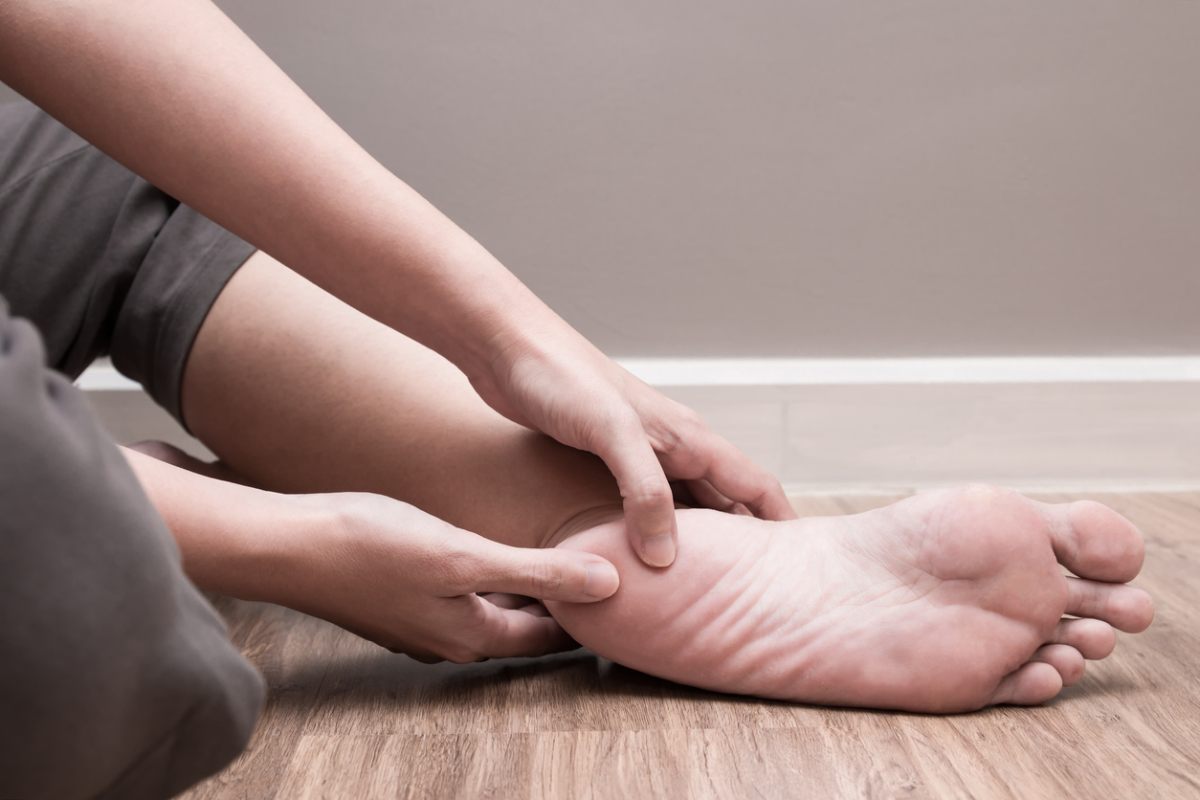Your feet play an integral role in your gait. Issues with any part of your foot can impact your daily routine. Your heels are impacted by the natural wear and tear of daily life. Issues with your heel can cause serious pain and impact your ability to walk, run, and jump. If you have issues with your heel, you may wonder, what is heel fat pad syndrome? Below you will find more information about the condition and what you should do if you experience any of the related symptoms.
What Is Heel Fat Pad Syndrome?
Heel fat pad syndrome involves the thinning of your heel fat pad. The fat pad on your heel is made up of thick elastic muscle fibers and fatty tissue. Your heel fat plays a major role in your gait as it serves as a shock absorber between the ground and your heels. Natural wear and tear and other factors can result in your heel fat pad thinning. The fatty tissue shrinks over time and the muscle tissue can lose its elasticity. Heel fat pad syndrome can impact your ability to walk, run, and jump. Treatment from a podiatrist in Los Angeles is necessary if your heel pain caused by heel fat pad syndrome impacts your daily routine.
Symptoms of Heel Fat Pad Syndrome
Heel fat pad syndrome can be painful and cause a variety of other symptoms. It varies from mild to severe pain, so it’s important to get treatment even if you have occasional pain as it can get worse. Consider the following symptoms and consult with a podiatrist right away if you experience one or a combination of the following.
- Bruise-like pain in the middle of your heel when you stand, walk, or run
- Deep pain in your heel that increases when you stand or walk for long periods
- Heel pain that gets worse when you participate in high-impact sports or exercises
- Pain in your heel when you walk barefoot on hard surfaces
- Deep pain when you press firmly on your heel
Causes of Heel Fat Pad Syndrome
The natural wear and tear of life can impact your heel fat pads. However, there are a number of other causes of the condition.
Family History:
Heel fat pad syndrome can run in your family. A family history of medical conditions that cause inflammation or impact your connective tissues can also increase your risk for the condition.
Excess Weight:
An increase in body weight can put more pressure on your heel fat pad. This can accelerate issues with your heel, including faster loss of elasticity and fat.
Foot Structure:
Your natural foot structure can place extra pressure on your heel. The alignment of your arch and your natural gait can increase your risk for heel fat pad syndrome.
Injury:
An injury that impacts your heel fat pad can increase your risk for the condition.
Natural Gait:
The way you move can impact your heel fat pad. The way your feet touch the ground when you walk or run can accelerate the breakdown of your heel fat pad over time.
High-Impact Activities:
Physical activities that put a lot of pressure on your heels can weaken your fat pads much faster. Sports such as basketball, tennis, and running can all put a lot of pressure on your heels.
Repetitive Activities:
Activities that involve repetition or even long periods of standing can put too much pressure on your heels. Warehouse jobs, cashiering, and sales jobs can all put a lot of pressure on your heels and increase inflammation.
Hard Surfaces:
Walking or running (barefoot or with unsupportive shoes) on hard surfaces can further break down your heel fat pad.
Unsupportive Footwear:
Shoes that are unsupportive can put unnecessary pressure on your heel fat pad. Sandals and flats are top culprits when it comes to issues with your heel fat pad.
Diagnosis and Treatment
If you experience any of the symptoms of heel fat pad syndrome, contact a podiatrist right away. They can effectively diagnose and treat the issue. Diagnosis involves a physical examination and a series of questions regarding your physical symptoms. In some cases, an X-ray, ultrasound, or MRI may be necessary.
There are a number of treatment options depending in the severity of your condition. Conservative treatment is often used for mild cases, but more serious intervention may be necessary if the issue has persisted for some time. A foot fat transfer in Los Angeles can help improve your symptoms and resolve the issue.


